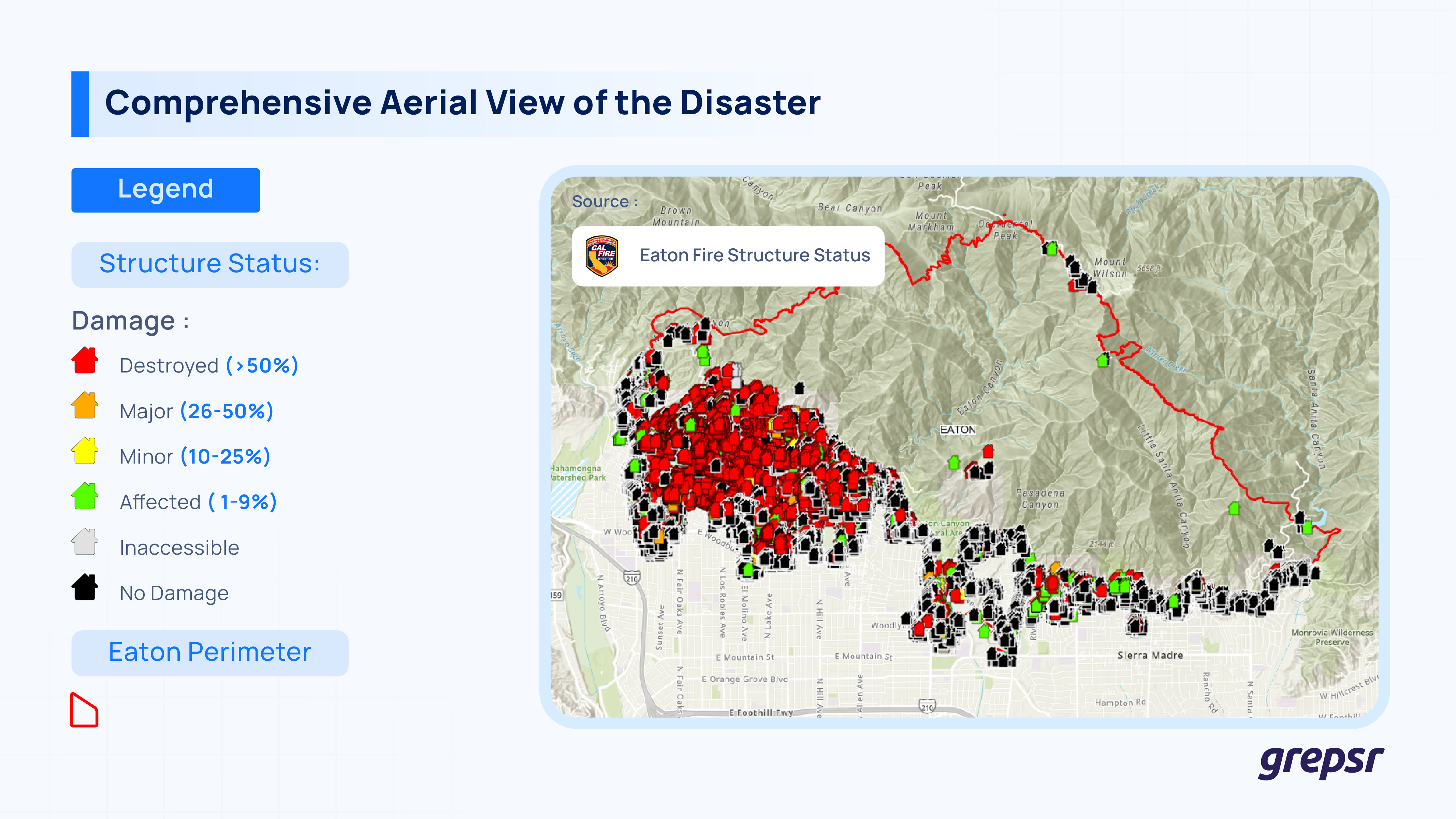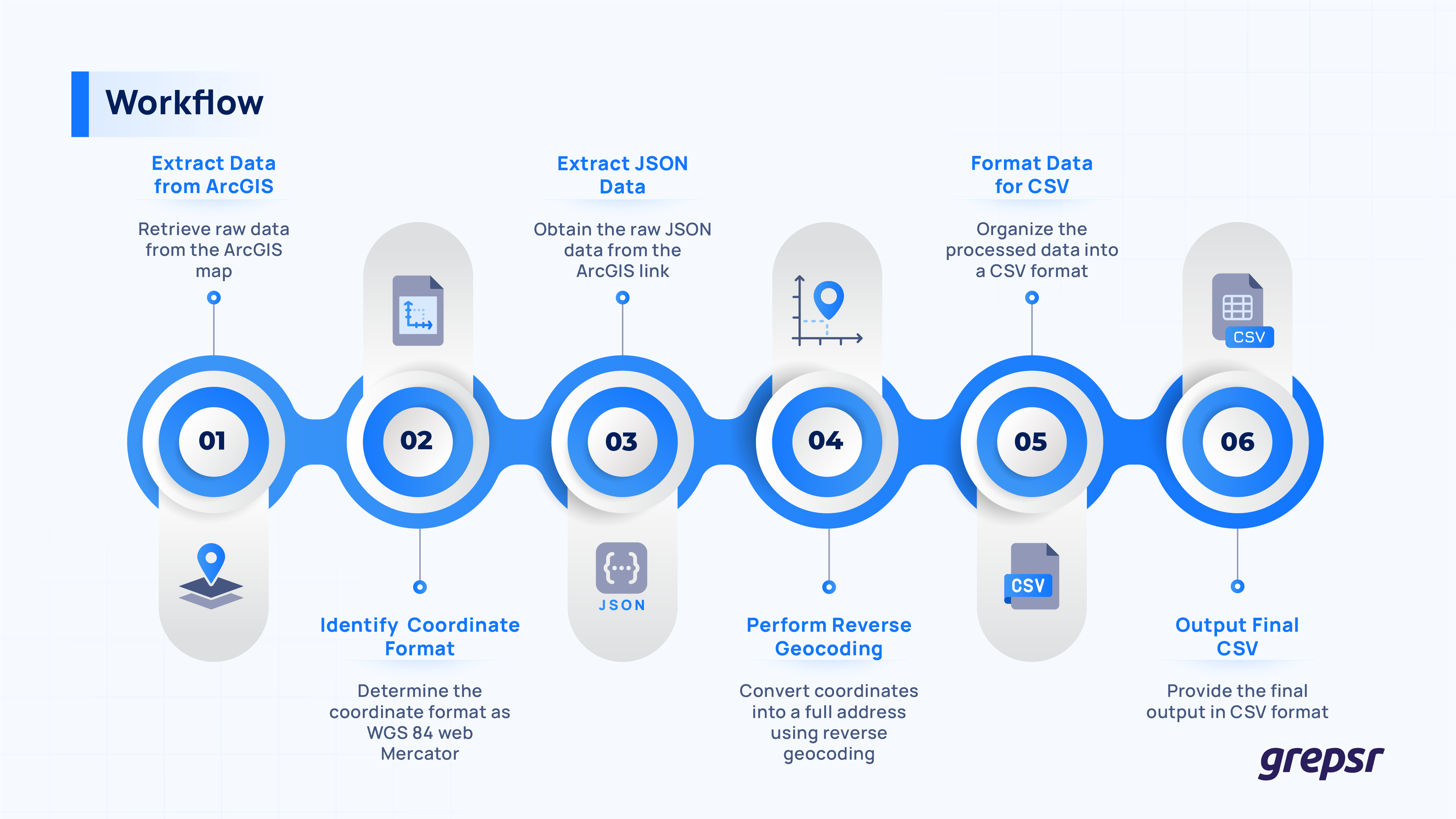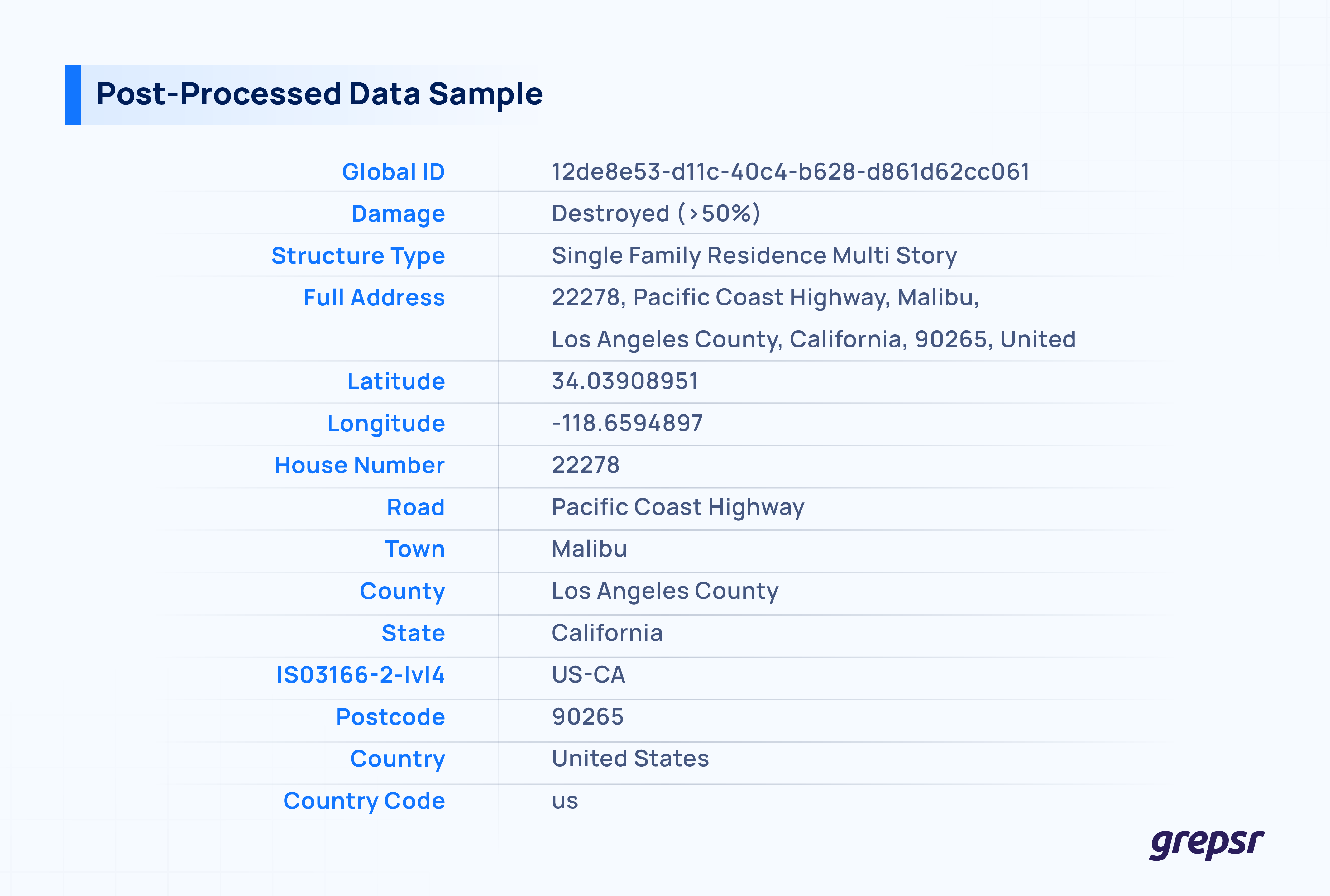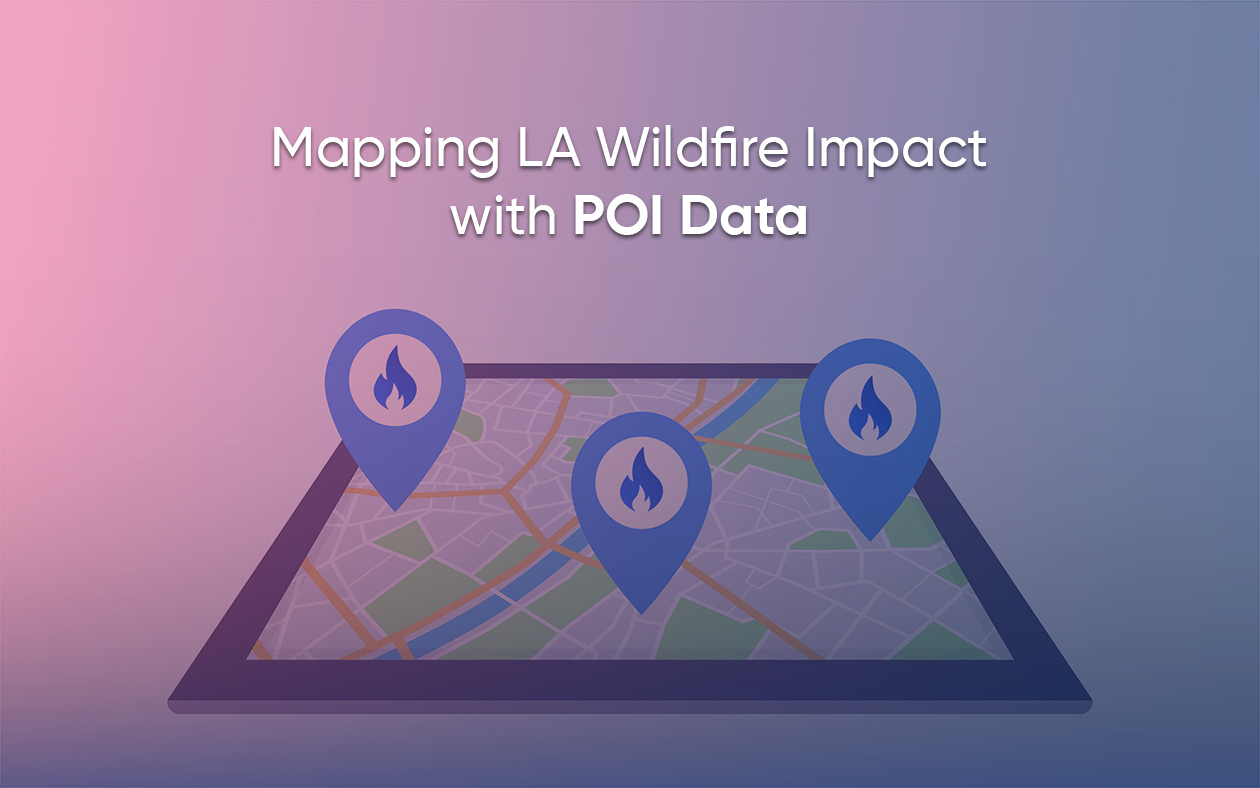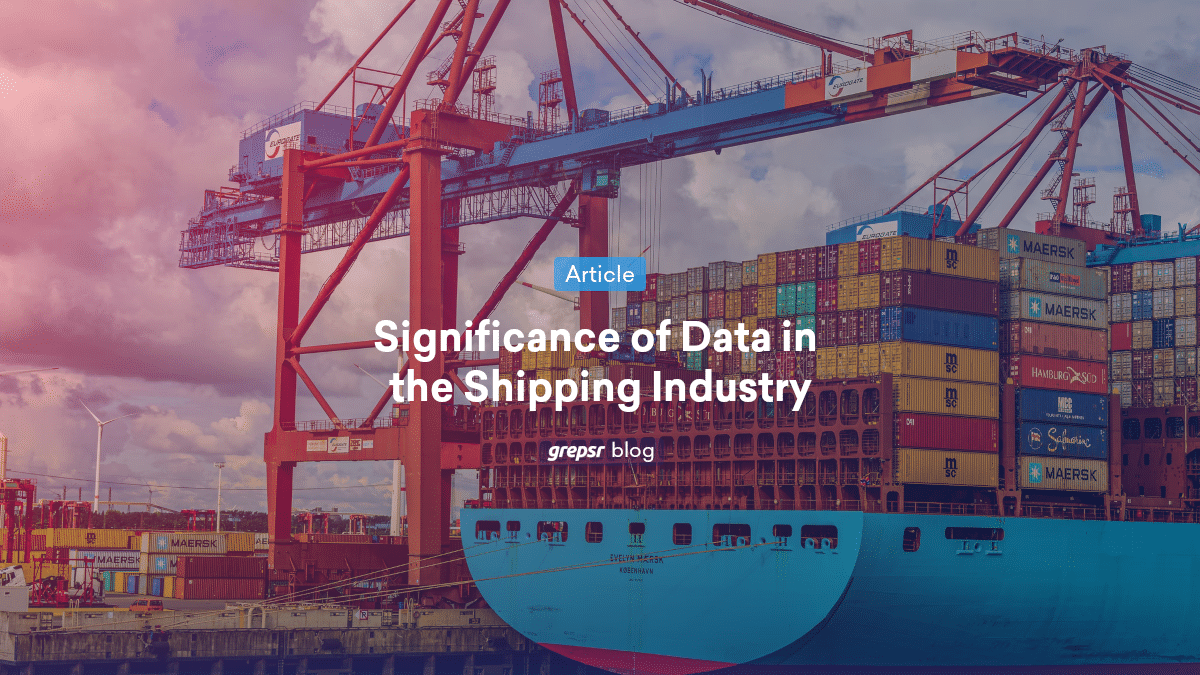
Search here
Can't find what you are looking for?
Feel free to get in touch with us for more information about our products and services.
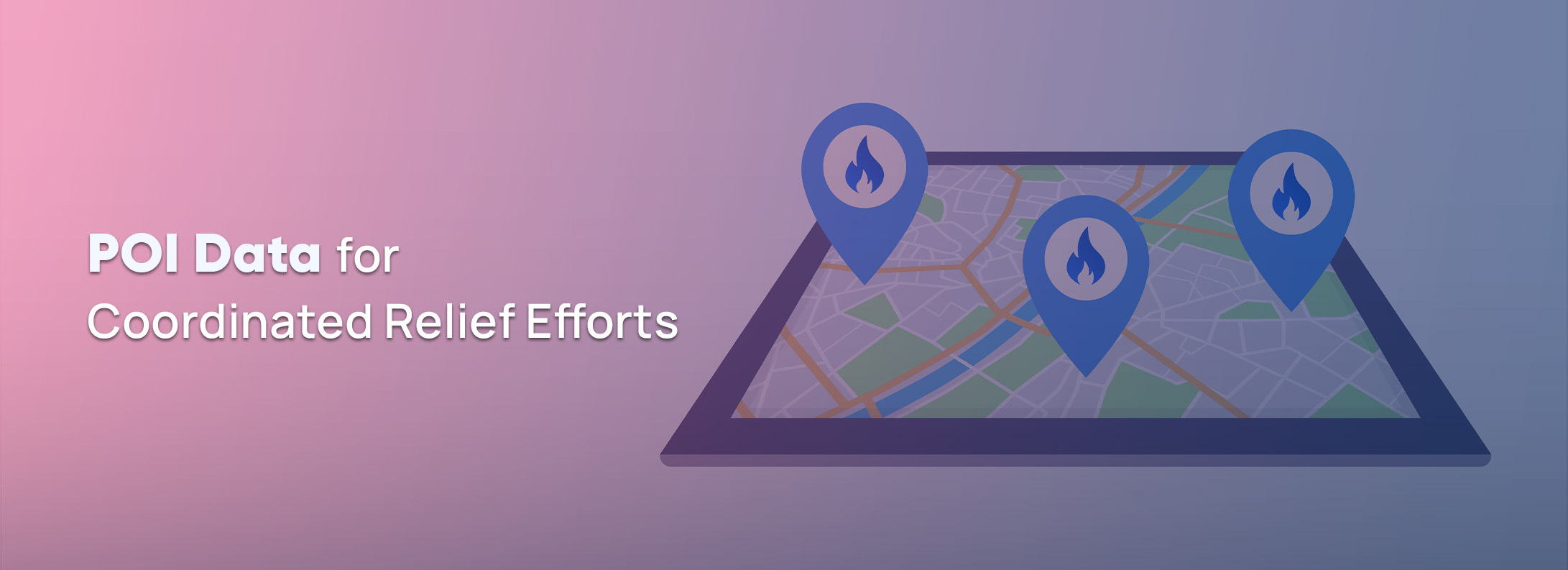
Background
Raging wildfires swept through LA in January, causing massive property losses expected to exceed $130 billion and claiming about 30 lives as of February.
While multiple factors contributed to this catastrophe, the primary cause has been linked to Climate Whiplash—a phenomenon where unusually wet years are followed by extreme drought, creating the perfect conditions for wildfires.
Authorities worked tirelessly to contain the fires, while communities and organizations came together to raise funds and support rehabilitation efforts.
In this context, we received an unusual request. A social services professional needed to monitor affected addresses using a web-based map. He requested a spreadsheet containing critical data points, including the ‘scale of destruction’ or ‘percentage of devastation’, to better allocate relief funds.
Additionally, he sought neighborhood-specific details such as house number, road, town, county, and even the full address.
However, obtaining neighborhood-level data to measure the impact proved more challenging than expected. Ultimately, we had to use reverse geocoding to convert coordinates into full addresses.
This case involved both extracting POI data and processing it.
Let’s dive in.

Challenge
Our task was clear: deliver neighborhood-specific POI data to generate critical insights into the LA fires and support relief efforts.
However, the map provided by the social services professional was incomplete.
The map looked like this:
Although it provided a comprehensive aerial view of the disaster, the actionable data was limited to geographic coordinates and damage assessments.
The real challenge was extracting neighborhood-specific details—structure type, full address, house number, road, town, and county.
Without these granular POI data points, coordinating effective relief efforts would be nearly impossible.
Solution
We collected latitude and longitude data for points of interest (POIs) from the map and then used reverse geocoding to convert those coordinates into full addresses.
- Data Extraction from a Web-based Map: First, we worked with a web-based ArcGIS map to extract raw geographic data. ArcGIS is a tool that helps with mapping and spatial analysis. The data we pulled includes coordinates (latitude and longitude) that represent different points on the map.
- Identifying Coordinate Format (WGS 84): The next step was to figure out the coordinate system used by the data. We determined that it was in the WGS 84 format, which is a standard coordinate system used by GPS.
- Extracting Data from JSON: The data we needed was stored in the JSON format. We accessed the ArcGIS link to pull this data into a usable format for further processing.
- Reverse Geocoding: This is the crucial step in the process. We leveraged reverse geocoding through the OpenStreetMap API to transform the coordinates (latitude and longitude) into a complete address. For example, instead of just getting the location as a set of numbers (like “40.7128, -74.0060”), reverse geocoding translates those numbers into something like “New York City, NY.”
- Final Output in CSV: After the reverse geocoding process, we compiled the results into a CSV file. This file includes the addresses of the buildings and infrastructure, making it easier to identify the locations that need attention.
Impact
The conversion of raw geographic POI data into actionable neighborhood-level information had a significant impact on the LA fire relief efforts.
By using reverse geocoding to transform latitude and longitude coordinates into detailed addresses, we provided the social services professional with the critical data needed to identify the most affected areas.
The CSV file, now containing full addresses and specific neighborhood details, allowed for more accurate targeting of relief efforts.
This enabled better allocation of funds, timely delivery of aid, and a more organized response to disaster.
Furthermore, the granular data helped prioritize rebuilding efforts, ensuring the areas with the highest devastation received immediate attention.




